A history of the south-western Saharan towns of Tichitt, Walata, Wadan and Chinguetti (800-1912)
Trade and civilization on west-africa's desert frontier
Deep in the desert of the south-western Sahara lie four ancient towns with a rich history that spans over a millennium. The towns of Tichitt, Walata, Wadan, and Chinguetti were important nodes in west Africa's cultural and commercial networks which flourished under the empires of Mali and Songhai.
These towns were also centers of Islamic scholarship and learning, attracting scholars and students from across west and North Africa. From the libraries of Chinguetti and Walata to the stone architecture of Wadan and Tichitt, the towns retain some of the best-preserved examples of Saharan architecture and culture.
This article explores the history of the south-western Saharan towns, tracing their evolution from bustling trading centers to remote oases in the desert.
Map showing the old towns of the south-western Sahara
Support AfricanHistoryExtra by becoming a member of our Patreon community, subscribe here to read more about African history, download free books, and keep this newsletter free for all:
The early history of the South-western Sahara and the empire of Ghana
The emergence of towns in the South-western Sahara was closely related with the northern expansion of the Ghana empire from the southern regions of Dia and Kumbi saleh, into the northern territories of Awdaghust around the late 1st millennium1. The Sahara’s southernmost towns of Tichitt and Walata were the first to be settled by Mande-speakers during the second half of the 1st millennium, some centuries after the collapse of the eponymously named Neolithic sites of Dhar Tichitt and Walata.2
Walata emerges first as 'Biru', a major commercial hub linking the Saharan markets to the empires of Ghana into which it was later subsumed. Biru displaced the town of Awdaghust after the latter's collapse around the 11th/12th century to the empire of Ghana and the Almoravids. According to the Timbuktu chronicles, it was primarily settled by the Tafrast/Tafaranko people, a Azer/soninke-speaking group that migrated from the west (ie: Awdaghust).3
Conversly, Tichitt was settled in the 8th century by the Imansa/Masna, an autochthonous group of Soninke-speakers, who named the oasis after sound of spraying water (shitu). The town was an important node in the regional salt trade that would expand during the Ghana and Mali eras, and was linked to the salt trade of Ijil carried out by the Azer.4
Walata and Tichitt in the empire of Ghana
The ethnonym Azer/Azayr appears frequently in the early history of the old towns in the south-western Sahara. Azer is described as a "commercial idiom" identifying groups of salt traders active between the salt mine of Ijil to the towns of Wadan, Chinguetti, Tichitt, Walata and Awdaghust. Azer is a primarily soninke language but contains words borrowed from Berber languages, It was spoken by salt traders of Mande origin settled in and around the south-western Saharan towns, who constituted a commercial diaspora that was analogous to the closely related Wangara gold traders of west Africa.5
Oral tradition identifies a group known as the Maxibinnu as residents of Tichitt who carried were commercial agents of the king of Ghana in Ijil during the early 2nd millennium. The 1506 account of Duarte Pacheco also mentions the "Ezarziguy" in the town of "Audem", which have both been identified as ‘Azayr’ and ‘Wadan’ —the latter being a major town where the Portuguese would briefly establish a factory. The Azer-dominated Wadan was at the time surrounded by the "Azenegues" (zenata Berbers), who would later be joined by Bannu Hassan Arab-speakers to form the three main groups of the south-western Saharan towns.6
The Azer thus constituted the predominant autochthonous groups in the early history of the more northerly towns of Wadan and Chinguetti which were first established around the turn of the 2nd millennium. The former town, as described above in the Portuguese account, was primarily settled by Azer merchants who traded gold from west Africa (although supplies were declining following the founding of el-Mina). Chinguetti was also settled by Azer speakers, the town's name being derived from an Azer phrase 'shi-n-gede' meaning 'the horses' springs. The town was preceded by an earlier settlement known as Abyair, inhabited by the Bàfùr, an agriculturalist group of Mande origin.7
Walata
Ruins of Wadan
The Mali era in the south-western Sahara. (13th-15th century)
The rise of the empire of Mali brought major political and social changes in the south-western Sahara. The empire extended its control over most parts of the region, particulary Walata and Tichitt, the former of which was under the control of an appointed official that in the 14th century was named Farbā Ḥusayn.8 The towns would be transformed into major commercial and scholary hubs that lay along important pilgrimage routes (such as the one used by Mansa Musa), leading to further migration of scholars from west and north Africa into the towns.
The largest town in the region was Walata, which in the 14th century was refered to as “the first district of the Sudan" by Ibn Battuta, who called it 'Iwalatan'. The town had became a center of scholarship, leading to an influx of 'Berber' clans that was reflected in the change of its name to the berber word Iwalatan, although the name 'Biru' remained in use in the 17th century. “caravans came from all directions and the cream of scholars and holymen, and the wealthy from every clan and land settled there – men from Egypt, Awjila, Fezzan, Ghadames, Tuwat, Fez, Sus, Bitu [Begho]."9
Besides Walata, the towns of Chinguetti, Tichitt and Wadan were also home to important scholars who were active in Timbuktu during the late Mali era and the early Songhai era. There are atleast two scholars from Tichitt and Chinguetti identified in Timbuktu during the late 15th to early 16th century. Chinguetti was the origin of Muhammad-n-Allah, the governor of Timbuktu during its brief Tuareg occupation in the late 15th century, while Tichitt was the origin of Uthman al-Hassan al-Tishit, who later served as imam of the Great Mosque in the mid 1500s before the office went to the Gidado family of Fulbe origin.10
This early period of scholarly prominence for the towns coincides with the semi-legendary accounts about their "founding" by Saharan scholars who claimed sharifan origins. With a scholar named al-Hàjj ‘Uthmàn reportedly settling at Wadan, another named ‘Abd al-Mù’min ibn Íàli˙ settling at Tichitt, shortly before others would settle at Chinguetti. However, these accounts which were written during the 19th century were reconstructions of the region's history in response to contemporary changes in political organization and cultural identities of the scholary elites. 11
The oldest mosques of the towns of Tichitt, Chinguetti and Wadan are also traditionally dated to the 12th-13th century when the towns were supposedly "founded", although its more likely that they were built a few centuries later. Save for Wadan which had two mosques, each town had one mosque prior to the 19th century. These mosques are generally rectangular buildings of dry-stone covered with mud plaster, they have tall minarets and flat roofs supported by columns. Most of the mosques went into ruin around the 17th century before some repairs and extensions were undertaken in the 19th century, eg the minaret of Tichitt, which is securely dated to 1842.12
Chinguetti Mosque, Plan of the mosque
Tichitt mosque and minaret.13
15th century mosque of Wadan
The Songhai era in the South-western Sahara: 15th-16th century
Walata was eclipsed by Timbuktu as the main Saharan entreport during the Songhai era in the late 15th. The town was sacked by the Mossi forces of the Yatenga kingdom in 1480 but would later become a refuge for the Sankore scholars of Timbuktu who were being pursued by the Songhai founder Sunni Ali. Walata was later taken by Songhai forces during the reign of Askiya Muhammad and its scholars returned in droves to Timbuktu. "Timbuktu's growth brought about the ruin of Walata, for its development, as regards both religion and commerce, came entirely from the west".14
In the Songhai era, the town of Walata was home to a Songhai administrator, likely serving as a capital of the region encompassing the territory from Wadan to Tichitt. According to Leo Africanus who identifies Walata as a province of Songhai, the chief of Walata fled from the Askiya's armies when the latter attacked the town but couldn't occupy it. The chief later become tributary to the Askiya but the town was less commercially important than the cities of Jenne and Timbuktu, with some modest trade in grain.15
The town of Wadan was likely under the Songhai control as well. It was a major cosmopolitan hub with a population of about 5,000 that included a small Jewish quarter. In 1487, a Portuguese factor named Rodrigo Reinel was sent by King John II to establish a 'factory' at Wadan, where he was to be assisted by Diego Borges and Gonçalo d'Antas. This was part of a mission intended for the 'rey de Tungubutu' (ie Sunni Ali of Songhai), and was likely authorized by him since he was campaigning in the south-western Sahara at the time. But the factory was abandoned shortly after because the Berbers surrounding the town proved unwelcoming, forcing Rodrigo and his companions to flee.16
The town of Shiqit appears briefly in contemporary writing as "singuyty" but unlike its peers, it was reportedly under the control of the "Arabs called Ludea " (ie: the Ūday of the Awlad Hassan tribe) who were also mentioned by Leo Africanus as occupying the desert between Walata and Wadan. Indicating that the nothern towns of Wadan and Chinguetti weren't fully under the political orbit of Songhai.17
Besides provisioning caravans with agricultural produce, Chinguetti’s main commerce at this time was the salt trade from the salt pans of Ijil and Taghaza which it directed southwards to Tichitt. As one scholar described the 15th century trade between the towns; "There once left Shinqit a caravan of 32,000 camels loaded with salt, of which20,000 belonged to the people of Shinqit and 12,000 belonged to the people of Tishit. All these loads were sold in Diara. The people were seized with admiration and wondered which of the two cities was most prosperous." The salt mine of Taghaza would later become a flashpoint in the conflict between Songhai and Morocco. 18
The principle salt routes and salt sources ca. 1000-170019
The Moroccan era in the South-western Sahara (1593-1698)
In 1543, a Moroccan expedition sent against Songhai reached Wadan but retreated before the Songhai army reached it. The first expedition to Songhai by the Moroccan forces of al-Mansur (r. 1578-1603) was sent in the direction of Wadan in 1584 but the expedition failed, and the army was dispersed "through hunger and thirst". A second expedition would later be sent to Taghaza in 1585-6. After the fall of Songhai in the third Moroccan expedition of 1591, Wadan and Walata led the delegation representing the 'western towns' that submited to the Moroccan sultan around 1593. This would have doubtlessly included Tichitt and Chinguetti although neither of these appear in Moroccan accounts until the 17th century. 20
Morocco lost its west African dependencies in the 1620s, during the reign of al-Mansur's sucessor Zidan Abu Maali and later descended into internecine conflict. The south-western towns were thus virtually autonomous, controlled by the scholary elites and the desert confederations. In Wadan, part of the Idaw al-Hajj (descendants of al-Hajj Uthman) would find themselves in conflict with other desert tribes such as the Idaw Aly who had fled Chinguetti in the 1660s.21
The 17th century period of the south-western Saharan is poorly documented, but there are indications that the towns entered a period of gradual decline and entire communities migrated southward. There's mention of a trade caravan from Walata which was lost in the desert around 1680. There are also indications that the Moroccans attempted to extend into the southern Saharan, the Moroccan kingdom had been restored by Moulay Ismail (1672-1727) whose armies marched south in 1678, reaching as far as Chinguetti, and In 1689, the Sultan reportedly led a large expedition that reached Chinguetti and Tichitt. However, recent research has cast doubt on the extent of these expeditions, or if they were ever undertaken at all.22
Old Tower/minaret of Oudane
Tichitt, Old town
The south-western Sahara from the 18th century to 1912: The emirates of Adrar and Tagant.
The south-western Sahara was for most of the 18th and 19th century under the control of loose confederations of tribal groups ruled by 'emirs', with the emirates of Adrar and Tagant in the north, while Brakna and Trarza were in the south. The emirs often came from leading Berber and Arab lineage groups. For example, the Idaw 'Ish exercised some control over the town of Tichitt, while power in Adrar oscillated between the three groups of the Idaw al-Hajj, the Kunta and the Idaw Ali, whose territories included the towns of Wadan and Chinguetti among others.23
Map showing the emirates of the south-western Sahara in the 18th-19th century.24
The leading lineage groups also doubled as scholars with extensive commercial interests. This social structure was epitomized by the Kunta who are were active between Wadan and Walata, and established a ‘capital’ in the Tagant region at Ksar el Barka around 1690 and at ‘rashid’ in 1765. 25
Similar merchant-scholar families emerged in the towns especially in Chinguetti, heralding an intellectual revival. Scholars from Adrar and Tagant built up large libraries that included books they composed locally as well as those purchased while travelling across north Africa. The best known of these libraries are the 19th century libraries of 'Dàddah wuld Idda' in Tichitt and Sìdì Muhammad wuld Habut in Chinguetti. By the 20th century, there were over 300 private libraries with more than 30,000 manuscripts across southern Mauritania, many of which were established prior to the colonial era.26
The town of Chinguetti in particular became an important point of departure for Saharan pilgrims heading to mecca. Writing in the 1790s, Sìdì ‘Abdallah al-Hàjj Ibràhìm explains that camel carravans from across west Africa and the southern Sahara would travel each year from Chinguetti to Mecca, adding that "Sometimes the entire household, even the children, undertakes the pilgrimage" This is reflected in the popularity of the nisba 'al-shinqit' used by scholars from the south-western Sahara when they reached Arabia27
Private library in Chinguetti28
Around 1766, the Kunta captured the salt mine of Ijil, and shortly after, they settled in the town of Wadan but the town had since been depopulated by internecine warfare. The commercial center of the region had shifted to Chinguetti which continued to trade with Tichitt, Walata and the other Saharan towns. Although none of these were controlled by the Kunta, they controlled the most lucrative trade routes connecting the towns.29
The Saharan towns continued their gradual decline into the 18th and 19th century as populations moved further south. The town of Wadan was the most affected, with a population of just 1,600 in the 1850s compared to Chinguetti’s 2,500. The depopulation was also significant in Walata which had just 1,000 residents in the 1850s, although Tichitt retained a significant number of its residents with a population of 3,000. 30
Tichitt appears to have escaped the political and cultural shifts affecting the nothern towns. But in the 1780s, there had been a major outmigration from Tichitt by the Masna likely connected to the northern arrival of the Awlad Billa, a berber group. This wouldn't be reversed until 1850, when the Masna succeeded in driving out nearly all the Awlad Billa. The Masna remained in control of the town's lucrative salt trade from local mines, which they traded with the towns of western Mali where they constituted an important commercial diaspora.31
Conversly, the scholary elite of Tichitt also engaged in carravan trade, especially with the Massina empire and the neighboring Mande kingdoms such as Kaarta. After a carravan from Tichitt was captured by the Massina empire’s forces during a war with Kaarta during the 1820s, the Tichitt scholar Amhad al-Saghir wrote on behalf of his people that : "Tishit is the center of this land, all the people come to Tishit to seek knowledge but it has no markets to obtain supplies. And the region of Kaarta is the granary of the people of Tishit". The Massina wars and the Awlad Billa disrupted trade which was only restored in the 1850s when the Massina was conquered by the Tukulor empire.32
The south-western Sahara political upheaval continued for most of the 19th century, save for the brief period between 1872 and 1892 when the emir Ahmad Wuld Lemhammad came to power in the Adrar region. He brokered a settlement between the various Emirs of Taganit, Trarza, Brakna and the Moroccan sultan. But this didn't fully guarantee the security of the carravan trade and travel across the region, especially not for the southern towns of Walata and Tichitt.33
In the late 19th century, the French who were active in the Senegal valley gradually brought the southernmost emirates of Brakna and Trarza under their political orbit after a series of wars. But following a failed attempt to expand into the Tagant in 1905, the French forces invaded both Tagant and Adrar where they were met with stiff resistance. After a lengthy series of colonial wars, the towns of Wadan and Chinguetti were occupied in 1909, while Walata and Tichitt were taken in 1912.34
Ruins of Wadan35
Descriptions of African traditional religions are rarely found in the accounts of African writers who were mostly Muslim, but in the city-state of Kano, local chronicles provide the most detailed descriptions of local African religions and elites whom they credit for playing an important role in the city’s history.
Read more about it here:
Previously covered in greater detail here;
State building in ancient west Africa: from the Tichitt neolithic civilization to the empire of Ghana (2,200BC-1250AD)
The Tichitt neolithic civilization and the Ghana empire which emerged from it remain one of the most enigmatic but pivotal chapters in African history. This ancient appearance of a complex society in the 3rd millennium BC west Africa that was contemporaneous with Old-kingdom Egypt, Early-dynastic Mesopotamia and the ancient Indus valley civilization, ov…
Urbanisation and State Formation in the Ancient Sahara and Beyond edited by Martin Sterry, David J. Mattingly pg 320, 498-504, On Trans-Saharan Trails By Ghislaine Lydon pg 84)
Timbuktu and the Songhay Empire by John Hunwick pg 31 n.17)
Timbuktu and the Songhay Empire by John Hunwick pg 31, n.16)
On Trans-Saharan Trails By Ghislaine Lydon pg 64, Salts of the Western Sahara: Myths, Mysteries, and Historical Significance by E. Ann McDougall pg 249)
Esmeraldo de Situ Orbis by Duarte Pacheco Pereira pg 75, Salts of the Western Sahara: Myths, Mysteries, and Historical Significance by E. Ann McDougall pg 248-249)
On Trans-Saharan Trails By Ghislaine Lydon pg 81-82, Timbuktu and the Songhay Empire by John Hunwick pg 31 The Transmission of Learning in Islamic Africa by Scott Steven Reese pg 44, n.14, Desert Frontier By James L. A. Webb pg 28)
African Dominion: A New History of Empire in Early and Medieval West Africa by Michael A. Gomez pg 86, 95, 125
Timbuktu and the Songhay Empire by John Hunwick pg 30, 34, 93 18 n.4)
Timbuktu and the Songhay Empire by John Hunwick pg 31, 86, 153)
Desert frontier By James L. A. Webb pg 16-17, The Transmission of Learning in Islamic Africa by Scott Steven Reese pg 44-45)
Historic Mosques in Sub-Saharan Africa by Stéphane Pradines pg 54-55, Making and Remaking Mosques in Senegal By Cleo Cantone pg 48
photo taken from ‘WildmanLife’
Timbuktu and the Songhay Empire by John Hunwick pg 30, 97-99, 219)
Timbuktu and the Songhay Empire by John Hunwick pg 275-277)
Esmeraldo de Situ Orbis by Duarte Pacheco Pereira pg 75, L'Asia del s. Giouanni di Barros pg 258, On Trans-Saharan Trails By Ghislaine Lydon pg 81-82, 87)
Esmeraldo de Situ Orbis by Duarte Pacheco Pereira pg 75, The Arab Conquest of the Western Sahara by by H. T. Norris pg 43)
On Trans-Saharan Trails By Ghislaine Lydon pg 84-5)
map by Ann McDougall
Timbuktu and the Songhay Empire by John Hunwick pg 166-167, 276-277, Desert frontier By James L. A. Webb pg 47)
Desert frontier By James L. A. Webb pg 48-51, On Trans-Saharan Trails By Ghislaine Lydo pg 82, 94,The Transmission of Learning in Islamic Africa by Scott Steven Reese pg 45-46
Landscapes, Sources and Intellectual Projects of the West African Past pg 146-152
La région du Tagant en Mauritanie: L'oasis de Tijigja entre 1660 et 1960 By Abdallah Ould Khalifa pg 65-67, 193-208, Nomads of Mauritania By Diane Himpan Sabatier, Brigitte Himpan pg 136-140
Map taken from; On Trans-Saharan Trails By Ghislaine Lydon
Desert frontier By James L. A. Webb pg 50-51, The economics of Islam in the southern Sahara by E. Ann McDougall pg 50-54
The Transmission of Learning in Islamic Africa by Scott Steven Reese pg 39-62
The Transmission of Learning in Islamic Africa by Scott Steven Reese pg 43)
Photo by Marco Longari AFP/GettyImages
Desert frontier By James L. A. Webb pg 56-57, On Trans-Saharan Trails By Ghislaine Lydon pg 97-98
On Trans-Saharan Trails By Ghislaine Lydon pg 152-153
Desert frontier By James L. A. Webb pg 61-62, On Trans-Saharan Trails By Ghislaine Lydon pg 154
On Trans-Saharan Trails By Ghislaine Lydon pg 115-116, 118
On Trans-Saharan Trails By Ghislaine Lydon pg 126-127
Nomads of Mauritania By Diane Himpan Sabatier, Brigitte Himpan pg 145-149
Photo by Michal Huneiwicz








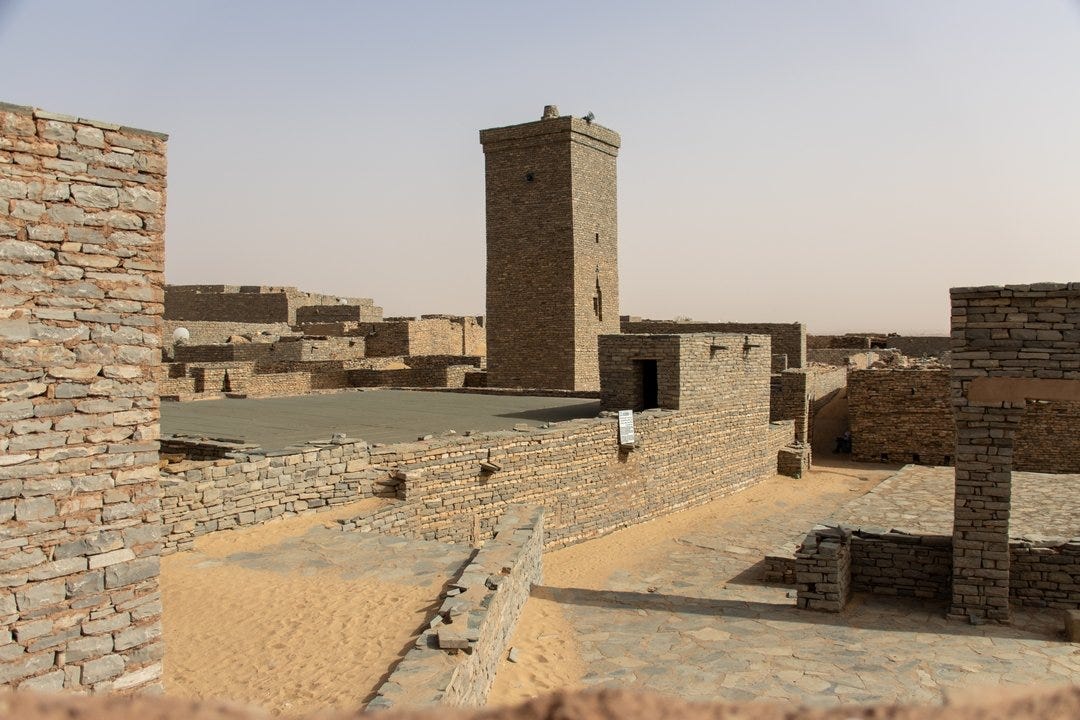
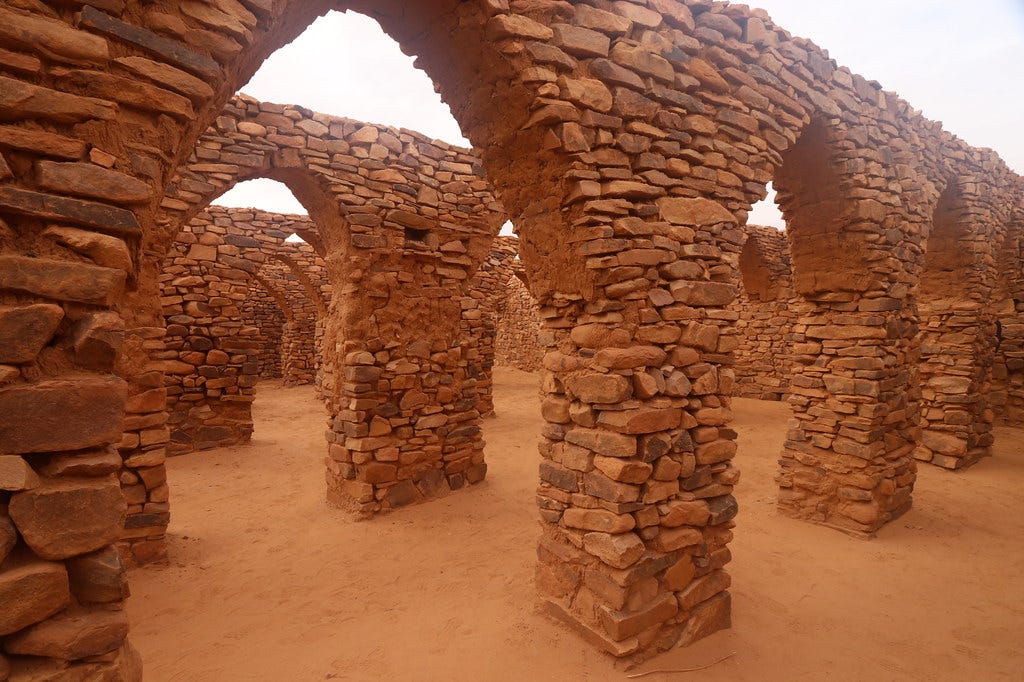

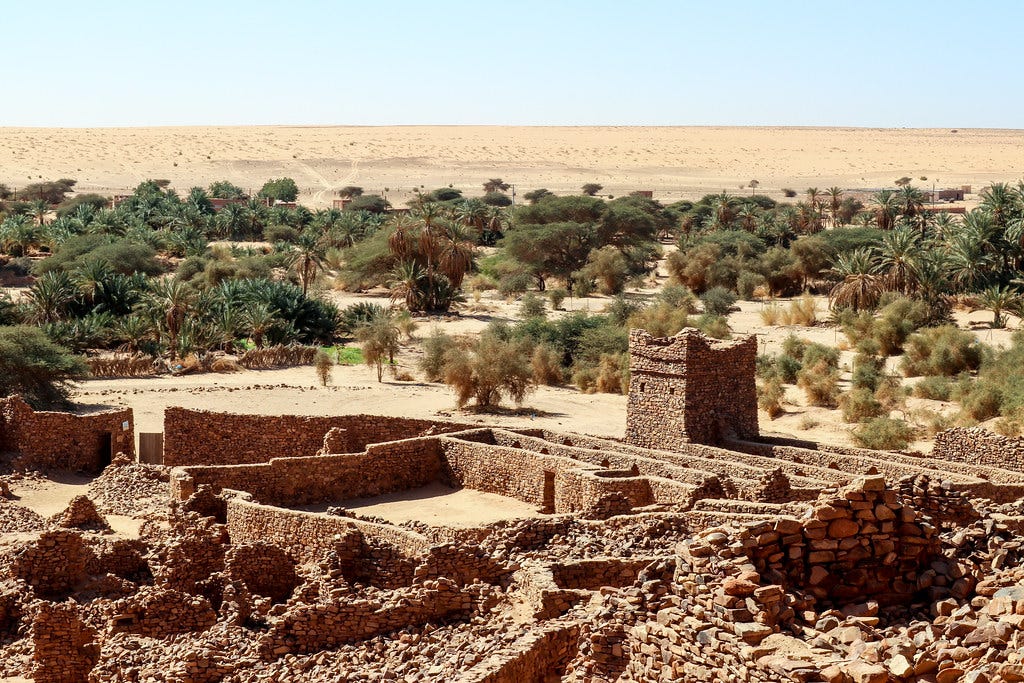
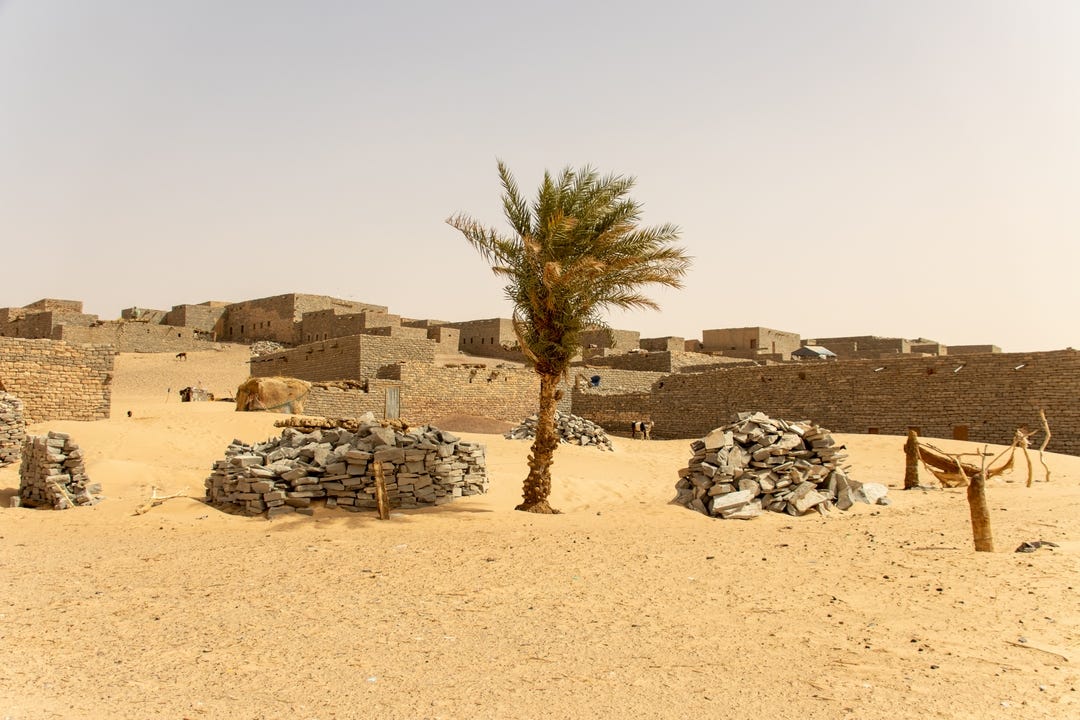
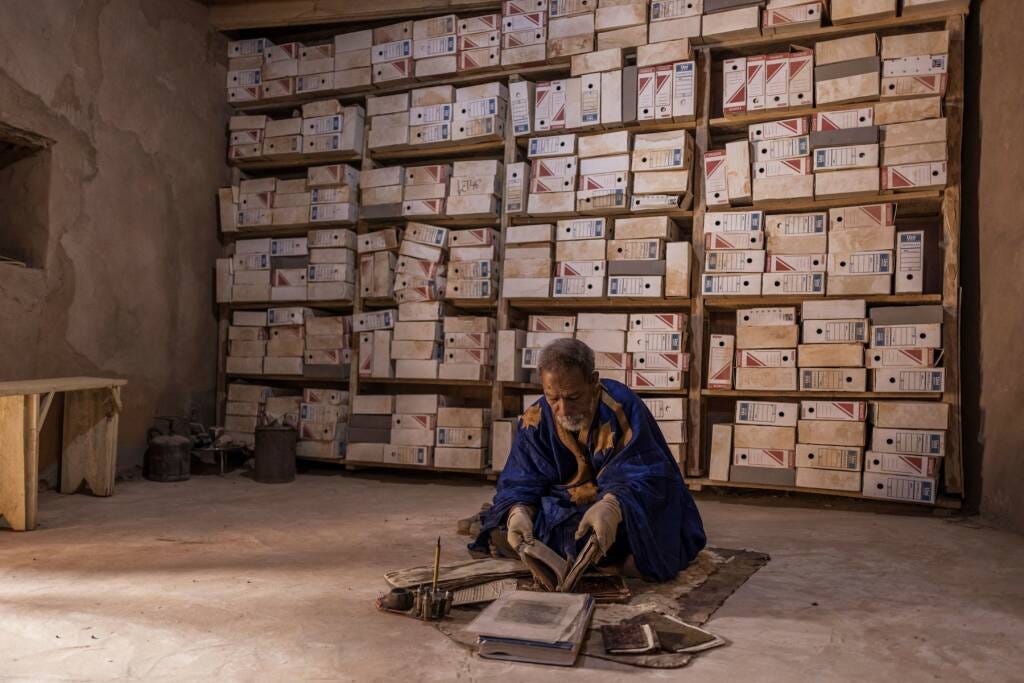
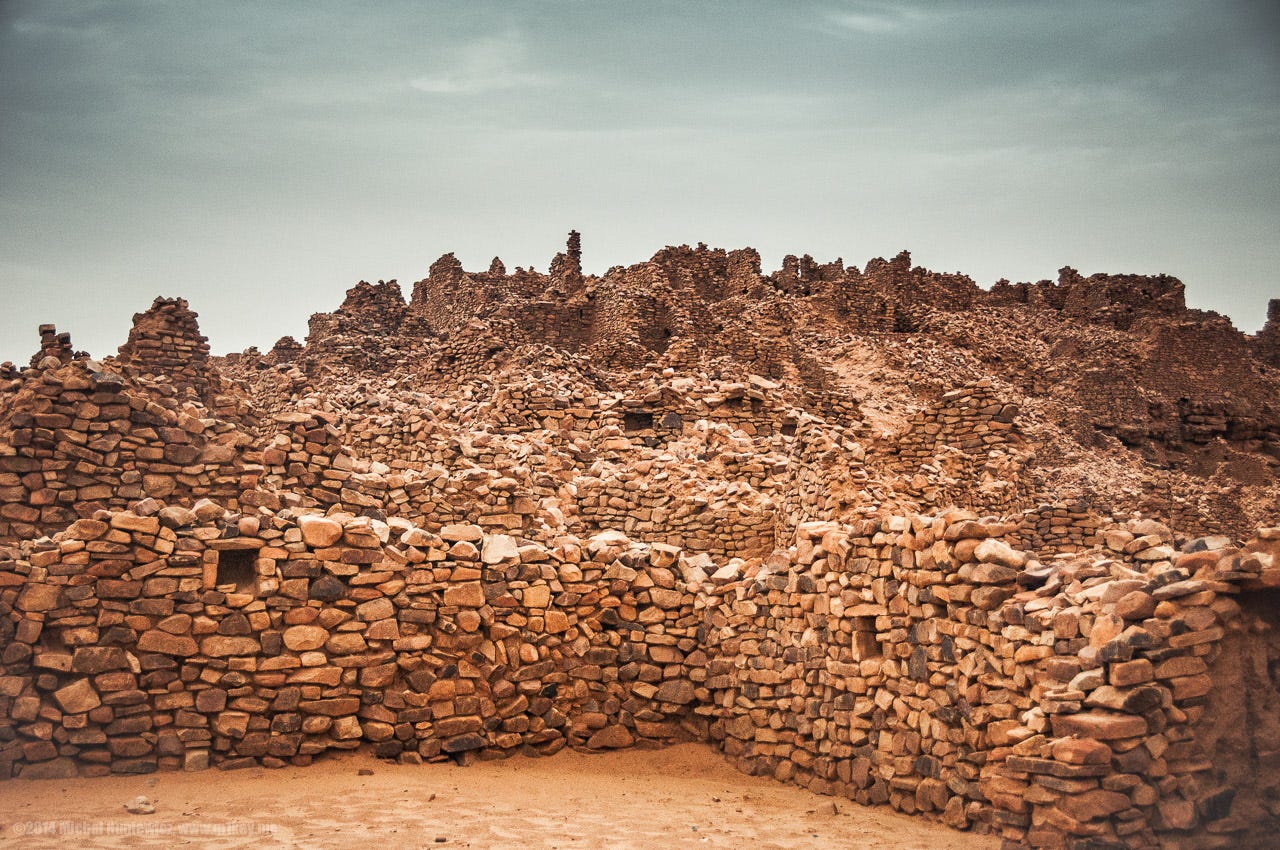
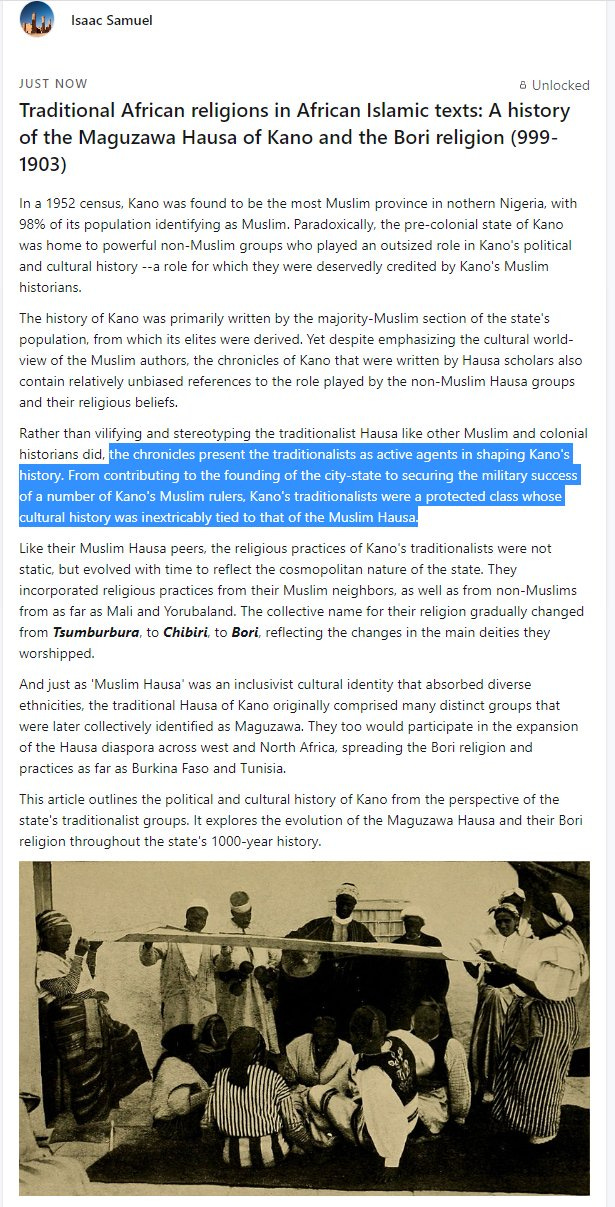

Fascinating. African history (apart from Egypt) is so often ignored, or limited to Bantu migration and the colonial period.
Listened to this while listening to Mussorgsky as interpreted by Ravel.
Works of art (Modest's composition and Ravel's orchestral arrangement) of equal stature to your articles in my opinion.
Historically accurate, lucid and engaging narrative - helping to reconstruct the African self through African eyes.
I am an Ethiopian raised in an Orthodox Christian household; such an illuminating exposition of West African Islamic history and tradition is a wonderful way to spend some time on a Sunday.
Thank you Isaac Samuel.